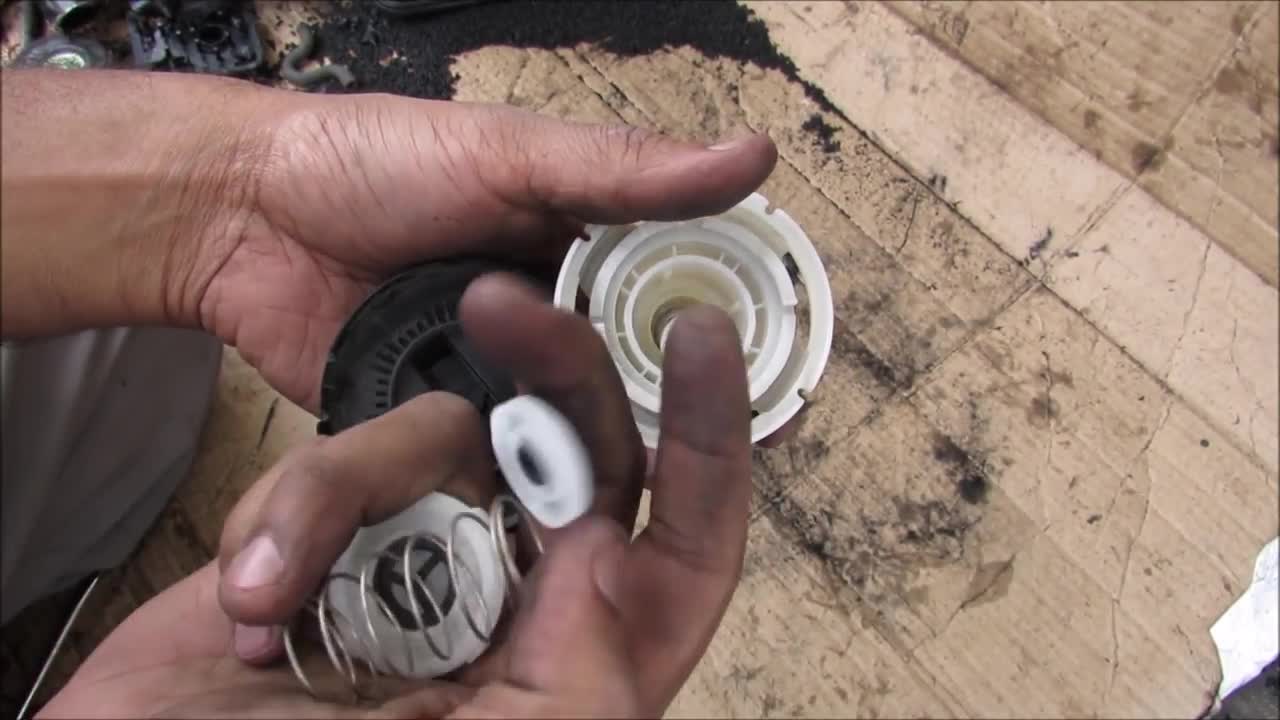Premium Only Content

How the EVAP System Works
Here's how the evaporative emissions and fuel system work on your car.
The EVAP system is responsible for venting harmful gasoline vapours from the gas tank into the atmosphere, causing smog.
It consists of the gas tank, filler neck, cap, vacuum lines, switching valves and the charcoal canister.
When the tank is being refuelled, the fill check valve is opened to vent building fumes in the tank to the charcoal canister. The charcoal absorbs the vapour, and will release it into the engine through the purge valve so it can get burned.
When the tank is full, the fill check valve has a float that rises and cuts off the vent line through a diaphragm. This prevents liquid fuel from entering the charcoal canister.
The vacuum switching valve allows the ECU to pull and hold a vacuum on the evap system for self diagnostic. Using the vapour pressure sensor, it can determine if there are leaks and throw a check engine light.
These self diagnostics are part of every car with OBD2, and are essential for an emission test to pass.
The fuel tank is also cut open, exposing the baffles inside, as well as the high and low points of the tank and inlet check valve.
Vacuum lines in between the gas tank, charcoal canister and air filter ensure air is directed for proper venting, purging and self diagnostic.
Care must be taken when working on the fuel system, as gasoline vapours are extremely flammable.
-
 15:25
15:25
Exploring With Nug
9 hours ago $7.63 earnedBag of Phones Found While Searching For Missing Man In River!
20.1K13 -
 23:24
23:24
MYLUNCHBREAK CHANNEL PAGE
9 hours agoDams Destroyed Turkey
43.8K47 -
 11:29
11:29
Tundra Tactical
1 hour ago $0.38 earnedGEN Z Brit 3D Prints a WORKING Gun Pt.3!
121 -
 2:08:21
2:08:21
The Illusion of Consensus
9 days agoFormer FDA Official Dr. Philip Krause On White House Pressure To Approve Covid Vaccines at the FDA
24K32 -
 4:25:56
4:25:56
GamerGril
6 hours agoFistful of GrilCheese 🤠 How The West Was Won 🤠
14.2K -
 LIVE
LIVE
Akagumo
11 hours ago🔴 LIVE - AKAGUMO - SPECTACULAR SATURDAY! #12 - WARZONE VERDANSK RETURNS
83 watching -
 1:50:26
1:50:26
Darkhorse Podcast
7 hours agoThere’s a New Tariff In Town: The 271st Evolutionary Lens with Bret Weinstein and Heather Heying
40.3K36 -
 29:36
29:36
The Brett Cooper Show
2 days ago $4.45 earnedThe Non-Binary Samurai Game No One Wanted | Episode 19
31.6K38 -
 LIVE
LIVE
Phyxicx
5 hours agoHalo on a Saturday! - 4/5/2025
85 watching -
 16:46
16:46
Stephen Gardner
9 hours agoJudge Boasberg THREATENS to ARREST Trump White House leaders!
47.6K217